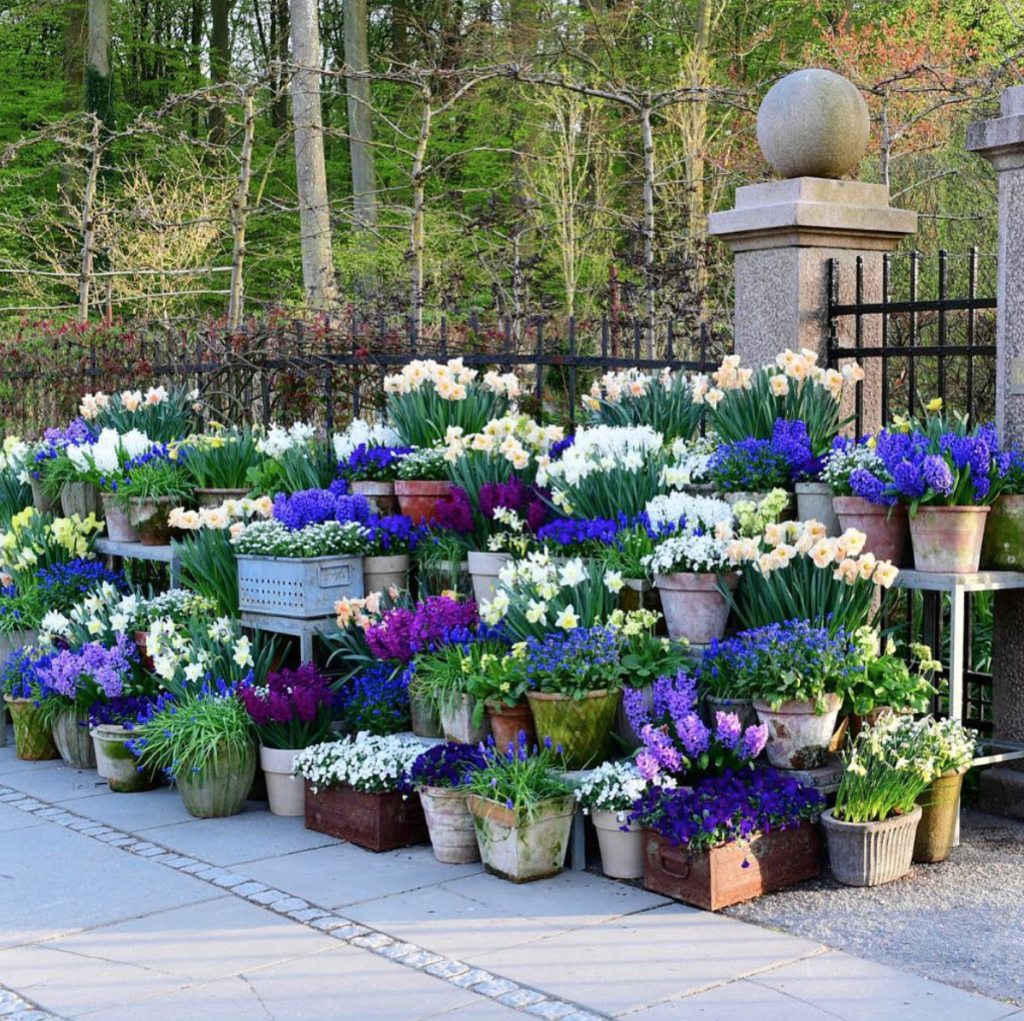How to Grow Edible Flowers in Pots: A Comprehensive Guide
:max_bytes(150000):strip_icc()/tips-for-growing-tomatoes-in-containers-848216-06-41ce3f715bd74adc94a18d6cbae3bf7c.jpg)
Are you dreaming of a colorful, edible garden but lack the space for a traditional plot? Welcome to the world of container gardening, where you can transform even the smallest urban balcony into a vibrant oasis of edible flowers. Imagine plucking fresh, fragrant blooms from your pots and adding them to your favorite dishes—a delightful blend of beauty and utility. Let's dive into the art of growing edible flowers in pots, exploring everything from choosing the right plants to ensuring optimal flower care.
The Joy of Edible Flowers: Why Grow Them in Pots?
Growing edible flowers in pots is not just about aesthetics; it's about embracing a sustainable and rewarding hobby. Edible flowers add a pop of color and unique flavors to your meals, making them a delightful addition to any urban gardening endeavor. Plus, container gardening allows you to control the environment, ensuring your edible plants thrive even in limited spaces.
Choosing the Right Edible Flowers for Your Pots
Before you dive into planting, it's crucial to select the right edible flowers. Some popular choices include:
- Nasturtiums: Known for their peppery taste, these flowers are perfect for salads.
- Calendula: Often used in teas and salads, calendula has a mild, slightly bitter flavor.
- Borage: With a cucumber-like taste, borage flowers are great in salads and cocktails.
- Violas and Pansies: These flowers have a mild, sweet flavor and are often used to garnish desserts.
Essential Tools and Materials for Container Gardening
To get started, you'll need a few essential tools and materials:
- Pots: Choose pots with good drainage to prevent root rot.
- Potting Soil: Opt for a high-quality, well-draining potting mix.
- Watering Can: A gentle watering can helps prevent overwatering.
- Fertilizer: A balanced, organic fertilizer will keep your flowers healthy.
Step-by-Step Guide to Growing Edible Flowers in Pots
Step 1: Selecting the Right Pots
Choosing the right pots is the first step in successful container gardening. Ensure your pots have adequate drainage holes to prevent waterlogging. Terracotta, plastic, and ceramic pots are all suitable options.
Step 2: Preparing the Potting Soil
High-quality potting soil is essential for healthy edible plants. Look for a well-draining mix that retains moisture without becoming waterlogged. You can also add compost or organic matter to enrich the soil.
Step 3: Planting Your Edible Flowers
Fill your pots with potting soil, leaving enough space for the plants. Gently remove the flowers from their nursery pots and place them in the soil, ensuring the root ball is fully covered. Water thoroughly after planting.
Step 4: Providing Optimal Flower Care
Watering
Consistent watering is crucial for edible flower care. Water your plants when the top inch of soil feels dry. Avoid overwatering, as this can lead to root rot.
Light
Most edible flowers require plenty of sunlight. Place your pots in a location that receives at least six hours of sunlight daily.
Fertilizing
Use a balanced, organic fertilizer to provide essential nutrients. Follow the package instructions for application rates and frequency.
Pruning
Regular pruning encourages bushier growth and more flowers. Remove dead or damaged leaves and flowers to promote new growth.
Troubleshooting Common Issues
Even with the best care, issues can arise. Here are some common problems and their solutions:
- Yellowing Leaves: This could indicate overwatering or nutrient deficiency. Adjust your watering schedule and consider adding a balanced fertilizer.
- Wilting Flowers: Wilting can be a sign of underwatering or excessive heat. Ensure your plants are well-watered and provide some shade during the hottest part of the day.
- Pests: Inspect your plants regularly for pests like aphids or whiteflies. Use organic pesticides or insecticidal soap to control infestations.
Enhancing Your Urban Garden with Edible Flowers
Growing edible flowers in pots is not just about practicality; it's about creating a beautiful, functional space. Arrange your pots in visually appealing ways, using different heights and colors to create a stunning display. You can even incorporate edible flowers into your home decor, using them as centerpieces or decorative accents.

Conclusion: Embrace the Beauty of Edible Flowers
Growing edible flowers in pots is a rewarding journey that combines the joy of gardening with the delight of culinary experimentation. By choosing the right plants, providing optimal care, and troubleshooting common issues, you can transform your urban space into a vibrant, edible oasis. So, why not start your container gardening adventure today and experience the magic of edible flowers?
FAQs
1. Which edible flowers are easiest to grow in pots?
Some of the easiest edible flowers to grow in pots include nasturtiums, calendula, borage, and violas. These plants are relatively low-maintenance and thrive in container environments.
2. How often should I water my edible flowers?
Water your edible flowers when the top inch of soil feels dry. The frequency will depend on factors like climate, pot size, and plant type, but generally, once or twice a week should suffice.
3. Can I use regular garden soil for my potted edible flowers?
It's best to use a high-quality potting mix specifically designed for containers. Regular garden soil can be too heavy and may not provide adequate drainage, leading to root rot.
4. How can I protect my edible flowers from pests?
Regularly inspect your plants for signs of pests. Use organic pesticides or insecticidal soap to control infestations. You can also introduce beneficial insects like ladybugs to help naturally control pests.
5. What are some creative ways to use edible flowers in cooking?
Edible flowers can be used in a variety of dishes. Add them to salads for a pop of color and flavor, use them as garnishes for desserts, or infuse them into teas and cocktails. The possibilities are endless!

Embrace the beauty and utility of edible flowers, and transform your urban space into a thriving, edible garden. Happy gardening!
0 Response to "How to Grow Edible Flowers in Pots: A Comprehensive Guide"
Post a Comment